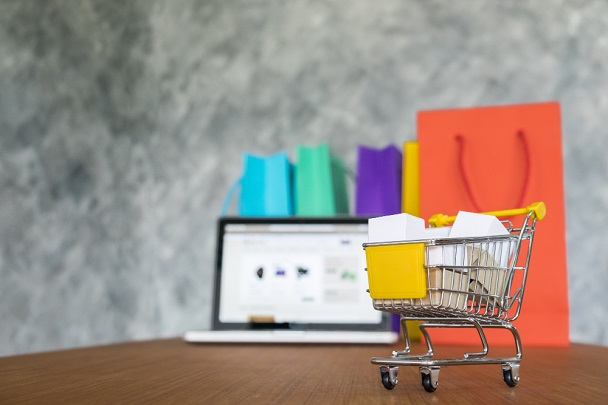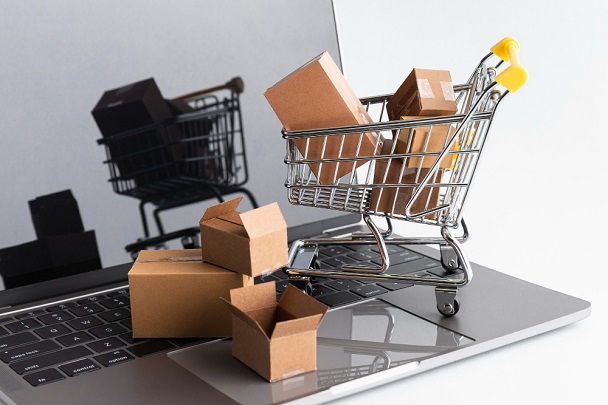
In the world of digital commerce, business organizations are rapidly recognizing the transformative power of POS systems with e-commerce integrations. The importance of an ePOS software that integrates with e-commerce cannot be overstated.
This powerful combination exemplifies how the right POS system can synchronize in-store and online sales, inventory management, and customer data, streamlining business processes and elevating customer experience.
It’s a strategic move that savvy businesses are making to stay ahead in a competitive market. Robust ePOS till systems like Square, Lightspeed and Shopify provide seamless e-commerce integrations.
Key Takeaways
- POS Systems with eCommerce integrations like Square, Shopify, SumpUp, Vend, and Lightspeed can help manage both in-store and online sales from one place.
- With these systems, businesses can easily keep track of stock, process various payment types and understand customer shopping habits better.
- Costs for setting up an integrated system vary; some like Square POS offer free initial setup while others may have monthly fees or transaction costs.
- Future trends include more personal touches in selling due to smart tech that learns what customers want.
- Choosing the right integrated POS can make running a shop easier and help it grow by providing a smooth experience for buyers whether they shop online or face-to-face.
Top 5 POS Systems with E-commerce Integration
Square POS
Square till system is a highly popular point-of-sale system known for its simplicity and user-friendly interface. It offers seamless integration with e-commerce platforms, making it an ideal choice for businesses expanding their online presence.
With its intuitive design, Square POS allows you to manage transactions, track inventory, and process payments quickly. It also provides valuable insights into customer behaviour and preferences, effectively helping you tailor your marketing strategies.
Its affordable pricing and transparent fee structure make it an attractive option for small businesses looking to optimise their operations.
Square Pricing: There is a free version, while the Plus plan costs £49/mo.
Shopify POS
Shopify POS system is a robust and versatile retail till system designed to elevate the in-store sales operations of businesses in the United Kingdom. Developed by Shopify, a leading e-commerce platform, this POS is tailored to meet the specific needs of brick-and-mortar businesses, be it boutique shops, pop-up stores, or established retail outlets.
It offers seamless e-commerce integration, allowing businesses to bridge the gap between their physical retail presence and their online store. This integration is a game-changer for retailers, as it enables them to offer customers a unified shopping experience, regardless of whether they are shopping in-store or online.
This innovative point-of-sale system seamlessly integrates with Shopify’s online store, creating a unified and cohesive retail ecosystem. With its array of key features, Shopify POS empowers merchants to streamline their operations, enhance customer experiences, and boost sales.
Shopify POS Pricing: Starts at £25/mo for the basic plan
SumUp POS
SumUp POS is one of the top-notch POS systems with seamless e-commerce integration. It offers an intuitive interface, robust inventory management, and real-time synchronisation between your physical store and online platforms.
With SumUp POS, you can effortlessly process transactions, manage sales, and keep track of your inventory across different channels. Moreover, it provides comprehensive support for various e-commerce platforms, ensuring a smooth and hassle-free experience for retailers and customers.
Additionally, SumUp POS empowers businesses with valuable customer relationship management (CRM) tools to enhance consumer interactions and boost loyalty. Its cloud-based nature ensures flexibility and scalability while maintaining stringent cybersecurity measures to safeguard sensitive customer data.
SumUp Pricing: SumUp POS pricing starts at £49/mo.
Vend POS
Vend ePOS is a popular choice for businesses integrating their point of sale system with e-commerce. It offers seamless inventory management, allowing you to track stock levels across all your sales channels in real-time.
This means you can easily manage online and in-store sales from one place, ensuring accurate stock levels and preventing overselling. Vend POS also provides robust support for various payment methods, making it easier for customers to complete transactions whether they’re shopping online or in person.
Moreover, Vend POS offers comprehensive reporting and analytics tools that give insights into your business performance across different channels. With its user-friendly interface and cloud-based system, Vend POS allows you to access crucial data anytime, anywhere – empowering you to make informed decisions regarding your business operations.
Vend Pricing: The price starts at £59/mo, with an option of paying £49, billed annually.
Lightspeed Retail
Lightspeed POS for Retail is a top choice for businesses needing a point of sale (POS) system and an e-commerce platform. It offers seamless integration, allowing you to manage inventory, sales, and customer information across your physical store and online presence.
With its user-friendly interface and robust features such as customisable reporting, multi-store capability, and customer loyalty programmes, Lightspeed Retail empowers retailers to streamline operations and enhance the overall customer experience.
The system’s cloud-based nature ensures real-time data accessibility from any device with an internet connection, making it a versatile solution for modern retail needs.
Lightspeed Retail Pricing: Starts at £79/mo
Why Is eCommerce POS Integration Important?

Imagine having your sales data and inventory synced in real-time across all your selling spaces – that’s what integrating your point-of-sale system with an online store does for you. It helps track everything sold, whether in-store or on the web, keeping stock levels accurate. This means fewer disappointments for customers who find items out of stock after they’ve clicked ‘buy’.
This kind of setup can also speed up checkout times, making shopping easier and more pleasant. When every part of the business talks to each other, you save time not having to enter data twice and reduce errors from manual entry.
Payment processing becomes a breeze too; you accept all sorts like debit cards, credit cards, and contactless payments—even Apple Pay or Google Pay—without hassle. A connected system makes it simple to widen payment methods offered to shoppers, which could mean they spend more with you! Plus, better customer relationship management comes built-in because you can see buying trends and manage loyalty programmes without extra effort.
In short, eCommerce POS integration keeps things running smoothly so both customers and managers are happier.
10 Key features to look for in an integrated eCommerce POS system

Having the right POS system with eCommerce integration can make your sales soar. It’s key to pick one that has all the tools you need. Here are some features to check out:
- Inventory management: Track your stock across both your shop and website. This means when you sell a shirt online, it also shows as sold in your store.
- Customer relationship management (CRM): Learn about what your customers like. A good system remembers their details and shopping history.
- Mobile compatibility: Use tablets or smartphones to make sales anywhere. This helps if you go to markets or pop-up shops.
- Payment processing options: Make it easy for customers to pay. The system should take cards, digital wallets like PayPal, and maybe even cheques.
- Multi-channel selling: Sell on social media and other websites, not just your shop. More places mean more people see what you have.
- Reporting and analytics: Understand what sells best with reports. You can then order more of the popular items.
- Hardware compatibility: Be sure it works with things like barcode scanners, cash drawers, and receipt printers. This makes your shop run smoothly.
- User-friendly interface: You don’t want something too hard to use. Look for clear buttons and simple screens so everyone can learn quickly.
- Security features: Keep data safe from hackers. The system should follow rules set by groups like Payment Card Industry Data Security Standard.
- Customer support: If something goes wrong, who do you call? Good systems have a team ready to help fast.
How POS system with eCommerce integration works
A POS system with eCommerce integration connects your online store to your physical shop. This means all your sales, whether they’re online or in person, show up in one place. Your inventory updates automatically whenever you sell something.
If someone buys a dress from your website, the same dress is taken off the shelf in your real-life store. It’s like having a smart helper that keeps track of everything for you.
This setup lets customers pay how they want to – using cards like Mastercard and Visa or mobile payments like Samsung Pay. The system can also handle things like gift cards and discount codes that work both online and offline.
It makes sure you don’t sell the same item twice by mistake. Plus, it gives shoppers up-to-date info on what’s in stock, so they won’t be disappointed if an item’s already sold out.
Guide to integrating POS with an eCommerce platform?

Integrating your POS system with an eCommerce platform can be done in three different scenarios: when you have a POS system without a website when you have a website without a POS system, and when you have neither a POS nor a website.
Each scenario requires specific steps to seamlessly integrate the two platforms for efficient operations and improved customer experience.
POS system without a Website
Having a POS system without a website is like having a shop with no online store. But don’t worry, you can still get the best of both worlds.
- Choose a POS that’s ready for integration: Look for a POS system that supports eCommerce connections even if you don’t have a website yet. This future-proofs your business.
- Do your Research: Find out which POS systems work best with online platforms. Square and Vend are popular for their easy-to-use interfaces.
- Set up your inventory: Make sure your POS software can track what you sell. This helps when you decide to go online – your products will be ready for the digital shelf.
- Think about customers: Pick a POS with features to store customer info securely. When you create a website later, you’ll already know who buys what.
- Train your team: Teach staff how to use the POS system so they understand it well. They should know it’s part of a bigger plan for selling online in the future.
- Keep data safe: Ensure your chosen POS has good security measures to protect payment details. You’ll need this trust when customers visit your future online shop.
- Plan for mobile sales: Many people shop on phones now, so think about how your POS can work with this too. Some systems let shoppers pay through apps or text messages.
- Decide on payments: Your POS should accept card readers and contactless pay. This prepares you for easy setup of online transactions later on.
- Look into extras: Extra tools in some POS systems can help once you’re online—like loyalty programs and discount codes that customers love.
A website without a POS system
Choose the right POS system for your website. Look for one that fits your specific needs and budget. Take into account things like how many products you sell and if you need to track customer data.
- Set up the integration: This typically means adding new software or an app to your website that connects to the POS. Follow the instructions carefully or ask for help from customer support.
- Sync your inventory: Make sure all the items on your website are now in your POS system. When they match, keeping an eye on stock levels becomes a breeze.
- Train your team: Show them how to use the new integrated system. They should know how to handle sales both online and in-person if you have a physical shop.
- Test everything works smoothly: Run some test orders and returns to ensure that both systems talk to each other properly.
- Keep an eye on data security: Using POS integrations means handling lots of customer information, so pick a system with strong cybersecurity measures.
- Update your payment methods: Your new POS should accept all kinds of payments like debit cards, credit cards, and even contactless options.
- Offer seamless checkout experiences: Customers should find it just as easy to buy something online as they would in-store with no hiccups during payment.
No POS and no Website
Moving from the scenario of having a website without a POS system, let’s explore starting from scratch with neither in place. This is your fresh beginning to build a seamless business operation.
- Choose an eCommerce platform that supports POS integration. Look for one that will grow with your business and that you can add a POS system to later.
- Research point-of-sale (POS) systems that can work with your chosen eCommerce solution. Make sure they can talk to each other easily.
- Set up your online store first. Include clear pictures, product descriptions, and prices for what you’re selling.
- Pick a POS system that can manage sales both in-person and online. This helps keep track of what you have in stock and what you’ve sold, no matter where it happens.
- Think about how customers like to pay. Your POS system should accept chip and PIN cards, contactless cards, and debit and credit cards.
- Get a good inventory management system going. It needs to handle products for both online and offline sales smoothly.
- Use mobile devices if you want to sell on the go or at events. Many modern POS systems use tablets or phones as registers.
- Train yourself and workers on how to use both the eCommerce site and the POS system together. Everyone should know how these tools help serve customers better.
- Check out applications or add-ons for your POS system that make running your business easier. Some apps connect directly with accounting software or social media like Instagram.
- Plan for costs like setup fees, monthly service charges, transaction fees on sales, and equipment like cash registers or card readers.
Cost for an eCommerce integration with POS
Investing in an eCommerce integration with a POS system can significantly streamline your retail operations, but it’s crucial to understand the associated costs. They can vary widely depending on functionality, scale, and provider.
Integrating an eCommerce platform with a Point of Sale (POS) system involves a range of costs that can vary significantly based on several factors. The total expense largely depends on the complexity of both systems, the level of customization required, and the scale of the business.
For small to medium-sized businesses, costs might range from a few hundred to several thousand dollars, encompassing software subscriptions, one-time integration fees, and potential hardware investments if the POS system requires specific devices. Larger enterprises might face higher costs, often reaching tens of thousands of dollars, due to more complex integration needs, higher transaction volumes, and the necessity for advanced features like real-time inventory management, customer data synchronization, and multi-location support.
Businesses must consider not only the initial integration cost but also the long-term financial implications and the potential return on investment that a seamless eCommerce-POS integration can bring in terms of efficiency, customer experience, and sales growth.
Conclusion
We’ve explored the best POS systems with e-commerce integrations. These systems offer seamless transactions, efficient inventory management, and enhanced customer experiences.
Implementing these strategies can significantly improve operational efficiency and sales growth. Integrating a reliable POS system with your e-commerce platform allows you to streamline your business operations and provide customers with a more convenient shopping experience.
As you optimise your retail operations, remember that leveraging technology is essential for staying competitive in today’s dynamic market landscape.
FAQ
What are POS systems with e-commerce integrations?
POS systems with e-commerce integrations are electronic points of sale—like cash registers and tablets—that work smoothly with online shops. They help businesses manage both in-store and online sales from one system.
How do cloud-based POS systems benefit the retail industry?
Cloud-based POS systems let shops quickly access their data anytime, everywhere. They’re great for managing inventory and understanding consumer behaviour without being tied to one place.
Can I use my existing point-of-sale terminals for self-checkout?
Certainly! Many point-of-sale software options upgrade your devices to allow self-checkout, keeping things quick and customer-centric at the checkouts.
Do POS solutions only handle sales, or can they do more for my business?
Point of sale solutions do much more than just process cheques or American Express cards—they also offer features like inventory management systems that help track products efficiently.
Best POS software











